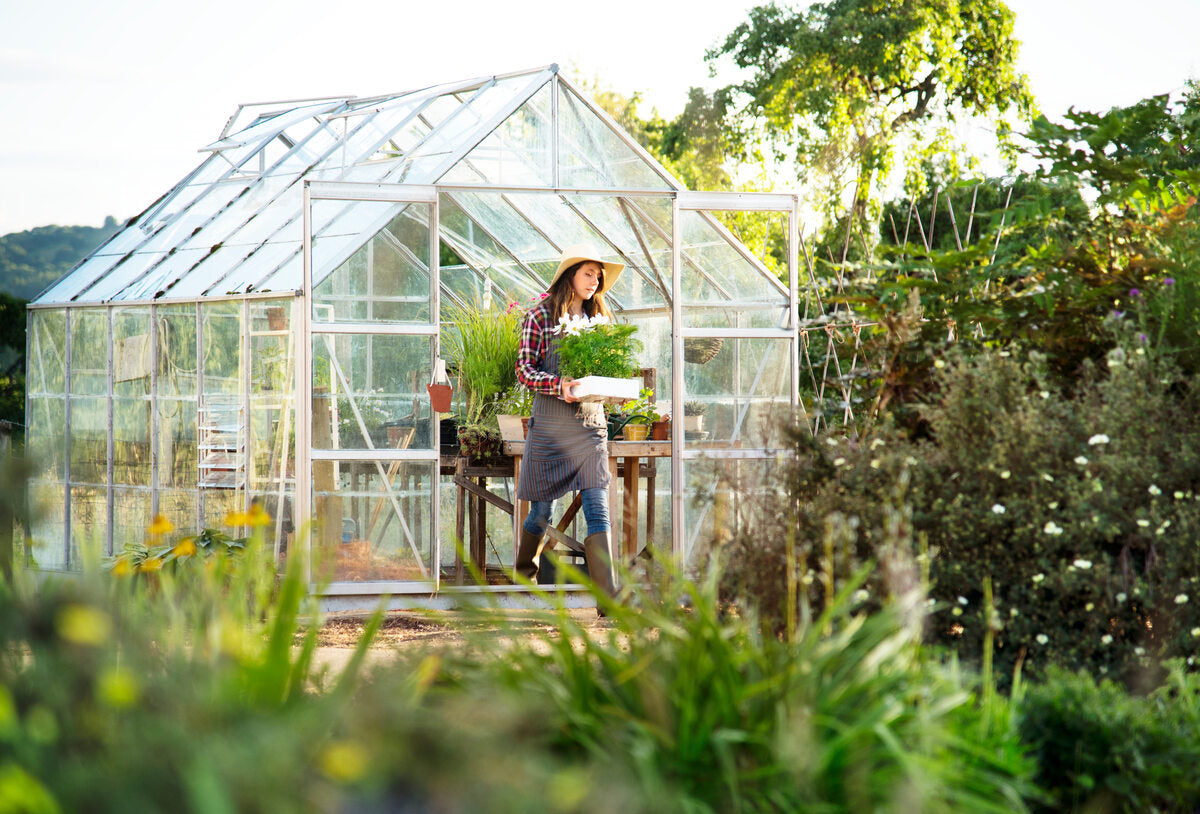1-800-540-905
Info@HomesteadSupplier.com
7am-4pm Pacific Time Mon-Fri
1-800-540-9051
Info@HomesteadSupplier.com
7am-4pm Pacific Time Mon-Fri
1-800-540-905
Info@HomesteadSupplier.com
7am-4pm Pacific Time Mon-Fri
1-800-540-9051
Info@HomesteadSupplier.com
7am-4pm Pacific Time Mon-Fri

Why are greenhouses green? Despite their name, greenhouses are often covered in clear or white materials rather than green. This article explores the reasons behind this choice and how the color of greenhouse coverings affects plant growth.
We'll delve into how different cover colors impact light transmission and plant development. We'll also discuss the benefits of direct versus diffused light.
What this article covers:
The color of a greenhouse cover influences the quality and quantity of light that reaches the plants, thereby affecting their growth.
By exploring what does a greenhouse do for plants, we can see that greenhouses optimize light, temperature, and humidity levels to support healthier, faster-growing crops.
For instance, white covers diffuse light, promoting even distribution but may reduce overall light intensity. Therefore, selecting the appropriate cover color is crucial for optimizing plant health and yield.
Clear coverings are generally recommended for greenhouses as they allow the most sunlight to penetrate, supporting robust plant growth. They provide the full light spectrum necessary for photosynthesis, especially beneficial during low-light conditions.
However, in regions with intense sunlight, diffused or white covers can be advantageous. They scatter light, reducing hotspots and ensuring uniform light distribution, which can prevent plant stress and promote even growth.
As mentioned before, clear greenhouse covers are ideal for light transmission. They are particularly beneficial in cooler climates or during seasons with limited sunlight.
Green covers, while aesthetically pleasing, can filter out certain light wavelengths, potentially hindering plant growth. They may be suitable in extremely sunny regions to reduce light intensity but are generally less effective than clear covers in promoting optimal plant health.
If you're looking for a touch of shade, the Riverstone Industries Monticello Mojave Greenhouse offers optional shade cloths, perfect for managing light in sunnier climates. Its strong, UV-protected panels still deliver excellent light diffusion without overwhelming tender plants.
To fully understand how does a greenhouse work, it's important to recognize how materials like transparent plastic facilitate the essential flow of sunlight and heat retention within the structure.
Our research indicates that transparent plastic is favored for greenhouse coverings due to its high light transmission, durability, and cost-effectiveness. It allows the full spectrum of sunlight to reach plants, essential for photosynthesis.
It's lightweight and easy to install, making it a practical choice for many growers.
Clear plastic is effective for seed germination as it ensures maximum light penetration, vital for the early stages of plant development. The warmth generated under clear covers also creates a conducive environment for seeds to sprout.
Furthermore, clear plastic helps maintain consistent humidity levels, reducing the risk of seedling stress. This controlled environment fosters uniform germination and healthy seedling growth.
Green and white greenhouse covers serve different purposes. Green covers provide some shading, which can be beneficial in extremely sunny areas, but they may limit the light spectrum available to plants.
White covers, on the other hand, diffuse sunlight, promoting even light distribution and reducing hotspots. This can lead to more uniform plant growth and is useful in preventing sunburn on sensitive plants.
Based on our observations, white greenhouse plastic is preferable in regions with intense sunlight, as it diffuses light, reducing heat buildup and preventing plant stress. This ensures a more stable internal temperature and uniform light distribution.
It's also beneficial for plants that are sensitive to direct sunlight, as it minimizes the risk of leaf scorch and promotes even growth.

Direct light refers to sunlight that travels in a straight line from the sun to the plant, resulting in intense illumination and potential hotspots. This can lead to uneven light distribution and overheating in certain areas of the greenhouse.
Diffused light, however, is scattered by particles in the atmosphere or by diffusing materials, providing uniform illumination. This reduces shadows and hotspots.
Our findings show that diffused light enhances photosynthesis by evenly distributing sunlight, ensuring that all parts of the plant canopy receive adequate light. This uniform exposure increases the efficiency of photosynthesis across the entire plant.
This type of light reduces leaf temperature and the risk of photoinhibition, where excessive light can damage the photosynthetic apparatus. This creates a more favorable environment for sustained photosynthetic activity and plant growth.
Yes, combining clear and diffused greenhouse panels can optimize light conditions. Clear panels can be used in areas where maximum light is needed, such as for seed germination, while diffused panels can cover areas with mature plants to prevent overheating and ensure even light distribution.
This hybrid approach allows growers to tailor the greenhouse environment to the specific needs of different plant stages, enhancing overall productivity and plant health.
Choosing the right greenhouse cover color is crucial for optimizing plant health, growth, and yield. Clear covers offer unmatched light transmission, ideal for seed germination and overall plant development in low-light environments.
Meanwhile, green and white covers serve niche purposes: green for mild shading and white for diffusing harsh sunlight in hot climates.
Understanding the difference between direct and diffused light, and strategically combining cover types, can give growers the flexibility to tailor the plant's environment. Visit our online store to create a sustainable future with Homestead Supplier
If you want to learn more, why not check out these articles below:
Compare products
{"one"=>"Select 2 or 3 items to compare", "other"=>"{{ count }} of 3 items selected"}
Leave a comment